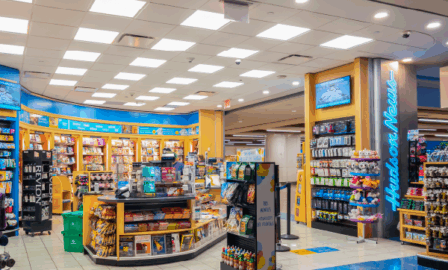Competition among Grocery Retailers Intensifies
Over the past decade, the grocery landscape has vastly evolved, primarily due to technology advances and shifting consumer preferences. With the entrance of non-traditional retailers like Wal-Mart and Amazon, the growing popularity of neighborhood markets, and the introduction of food e-tailers, market share is being drawn away from traditional grocers. With the grocery industry valued at approximately $600 billion, traditional grocers will have to make both operational and customer-facing changes to remain competitive.
Of the top ten US-based grocery retailers by sales, only Kroger, Safeway and Stop & Shop are considered traditional; those remaining are supercenters, wholesale clubs or drug stores. Companies such as Target, CVS and Costco are able to oust some traditional grocery retailers by leveraging their buying power or robust distribution and logistics centers. And in an industry where the highest cost driver is purchases—which accounts for approximately 75 percent of revenue—traditional grocery retailers must streamline their supply chain to deliver at least the same level of value as their big box counterparts to compete on quality and cost.
During Albertson’s recent acquisition of Safeway, their CEO cited “significant cost saving synergies” as a way to bolster their competitiveness. Similarly, Kroger’s recent merger with Harris Teeter is expected to garner supply chain efficiencies, and their acquisition of Vitacost will capitalize on the growing popularity of grocery e-commerce.
Other strategies may include carrying fewer, but more differentiated products and offering customers “fresh” options—whether that includes locally sourced meats and produce, organic and antibiotic-free options, or made-to-order meals. (Consumer Reports 2015 Supermarket Buying Guide discusses the “Focus on Fresh” here.) In addition, with the expansion of private label brands, analysts note that consumers seem to prefer their value over other brands. Manufacturers and producers will need to consider how to enhance their products to appeal to consumers, while distributors should explore innovative methods to keep costs down and improve supply chain efficiency.
With sizable industry mergers, the expansion of international chains into the US market, and the entry of niche food retailers and e-tailers, competition will only intensify. The consumer experience, therefore, will become even more critical for retaining and expanding market share. In a recent NPR article, Phil Lempert, the “Supermarket Guru,” perhaps said it best, traditional grocery stores will have to make the act of buying groceries more of an experience than a chore. This may involve incorporating: areas where customers can eat (the “groceraunt”); smaller physical locations; on-demand delivery services; an assortment of international products; cooking classes; or skilled butchers, sommeliers, and dieticians to deliver an end-to-end customer experience.
Retailers are already becoming more selective about the products they offer, and many are improving the ways in which they engage consumers. To remain competitive, however, grocery retailers must evaluate their business models and value propositions to determine how both may need to evolve to address changes in industry and consumer dynamics.


